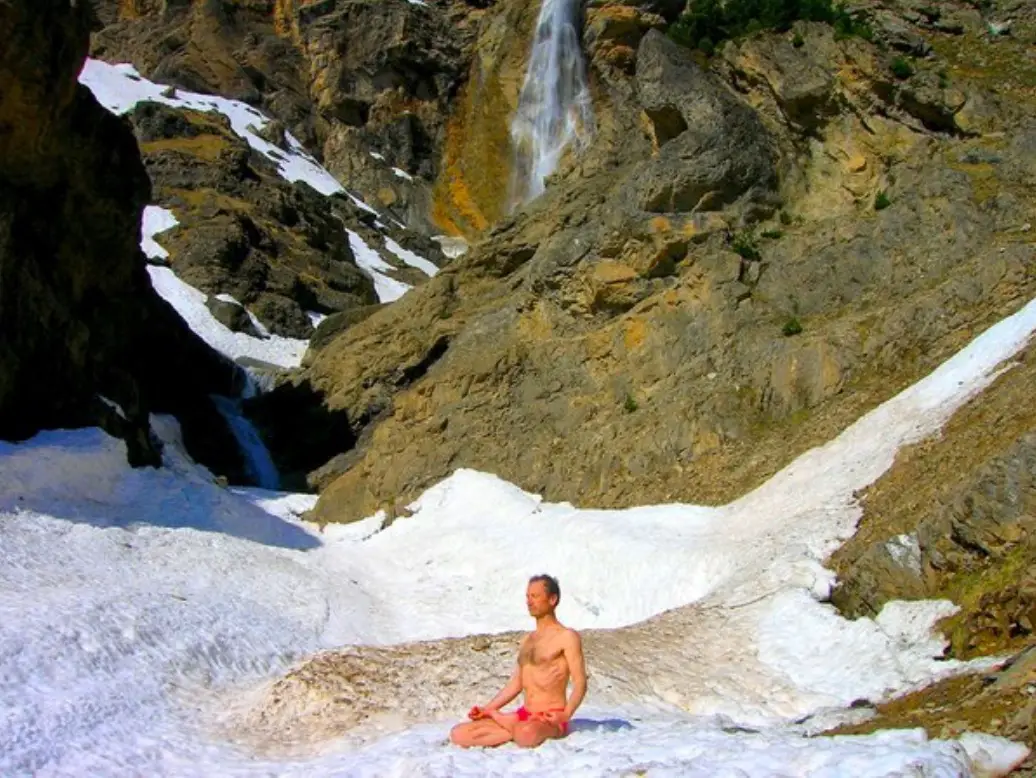There’s the Western version of meditation – whereupon practitioners sit on comfy cushions, with a nice pot of tea nearby, in a perfectly quiet room, and a meditation ‘master’ often nearby to comfort them through any disquieting emotions that should arise once we finally quiet our incessantly busy brains.
Then there’s the ‘other’ version of meditation. Numerous ‘other’ versions, in fact, that have been practiced for millennia around the world to free our minds from their stubborn fascinations and trappings.
Among these consciousness calisthenics are what we, in the West, might call ‘extreme meditation’, and each of these practices would make a daily ten-minute meditation ritual in a plush yoga studio or a verdant retreat in the mountains look like child’s play.
Meditating Among the Rats
At the Karni Mata Temple, in Deshnok, Rajasthan India, for example, meditators sit among thousands of rodents who are honored and even encouraged to run free. If you think of a typical New Yorker’s disgust for a single rat, and multiply that by a factor of forty, then you might start to imagine what it could be like to try to calm your mind in the ‘Temple of Rats.’
Here, these vermin are revered as divine beings, and at any time up to 20,0000 rats are given a home. Due to the unusual practices of the temple, an additional hundred thousand spiritual pilgrims flock to the temple every year to see the rats doing their thing. How’s that for a few distractions during a meditative practice?
Meditating in Below Zero Temperatures in the Nude, and Hot Oil
Certainly not a feat for any average meditator, Tibetan monks can raise their body temperatures in their extremities by as much as 17 degrees Fahrenheit while their core temperatures remain normal. This phenomenal practice allows them to meditate in extreme climates, such as atop the snowy Himalayan Mountains.
Called g-Tummo meditation, or the meditation of the inner fire, this Indo-Tibetan practice has been dissected by scientists to understand just how one’s consciousness can be transformed to embody the divine. I the process, meditators learn how to withstand the harshest environmental conditions.
Wim Hof, a Polish man who has gained 20 World Records for withstanding extreme temperatures practices g-Tummo. He has climbed Mount Kilamanjaro in only shorts and shows, using a special breathing meditation that allows him to control his core temperature.
In a similar act of unfathomable physical resolve, a monk from Thailand’s Nong Bua Lamphu, has been filmed meditating above a burning furnace, in a vat of hot oil, to prove his strength and determination. Some say that special herbs were applied to the vat before the meditating monk entered it, but it is likely a show of mental agility which sages and sadhus have displayed for centuries.
In fact, this display was once is rote, even if it can be explained away in the modern world scientifically. The ancient Pali canon, the Tipitaka describes miracles like these as if they were a common occurrence.
In Thailand, one monk has demonstrated extreme powers of concentration and physical stamina by meditating in a vat of hot oil. Though skeptics claim that herbs are added to the cauldron before the monk steps into it which allow him to withstand the heat, the act is still representative of extreme conditions which many advanced meditators might endure in order to tame the egoic mind.
Meditation has also taken place among King Cobra snakes for more than 4000 years. The snake is a symbol for Kundalini awakening, and on some cultures, there are entire communities of snake-like beings called Nagas who played an important role in shaping human consciousness.
Other practitioners meditate in mountain caves, with hardly any food or water, or with little covering in harsh climates. There are really an infinite number of sadhus practicing meditation that we westerners would consider severe.
Charnal Grounds Are Fair Play for Elevating Consciousness
In medieval India, and the Himalayas, for instance, a practice recommended by the Buddha himself was perfected. At above-ground sites a monk or sadhu would sit among corpses left to naturally decay in the elements. It was not uncommon for meditation practitioners to watch the vultures wait anxiously to dispose of a corpse left out in under a blue sky.
These charnal grounds, as they were called, were ripe for helping an aspirant to release their attachments to their physical bodies, and even life itself. It wasn’t meant to be an easy practice. Only stalwart meditators keen on releasing the ultimate attachment would practice under these harshest of conditions. You could call it a spiritual Tough Mudder. If you could get through this, all other challenges in life would likely be a cakewalk.
Modern Meditation is Easy
When we consider what other spiritual aspirants have been willing to undergo in order to merge their consciousness with the divine, a few moments on a meditation mat might seem like a goal worth trying to accomplish. If you’ve got the perfect temperature, the perfect seat, and the perfect mentor, you’re already fairing better than hundreds of thousands of meditators through the ages.
Here are just a few methods to calm your mind the ‘easy’ way – no snakes rats, or vats of boiling oil:
- Use a mantra
- Use candle light to focus your eyes and mind (trataka).
- Simply become an observer, with no judgment.
- Try a guided meditation, there are thousands on Youtube.
Image credits: Ibtimes.co.uk, vajratool, truthseeker.co.uk, highexistence.com










